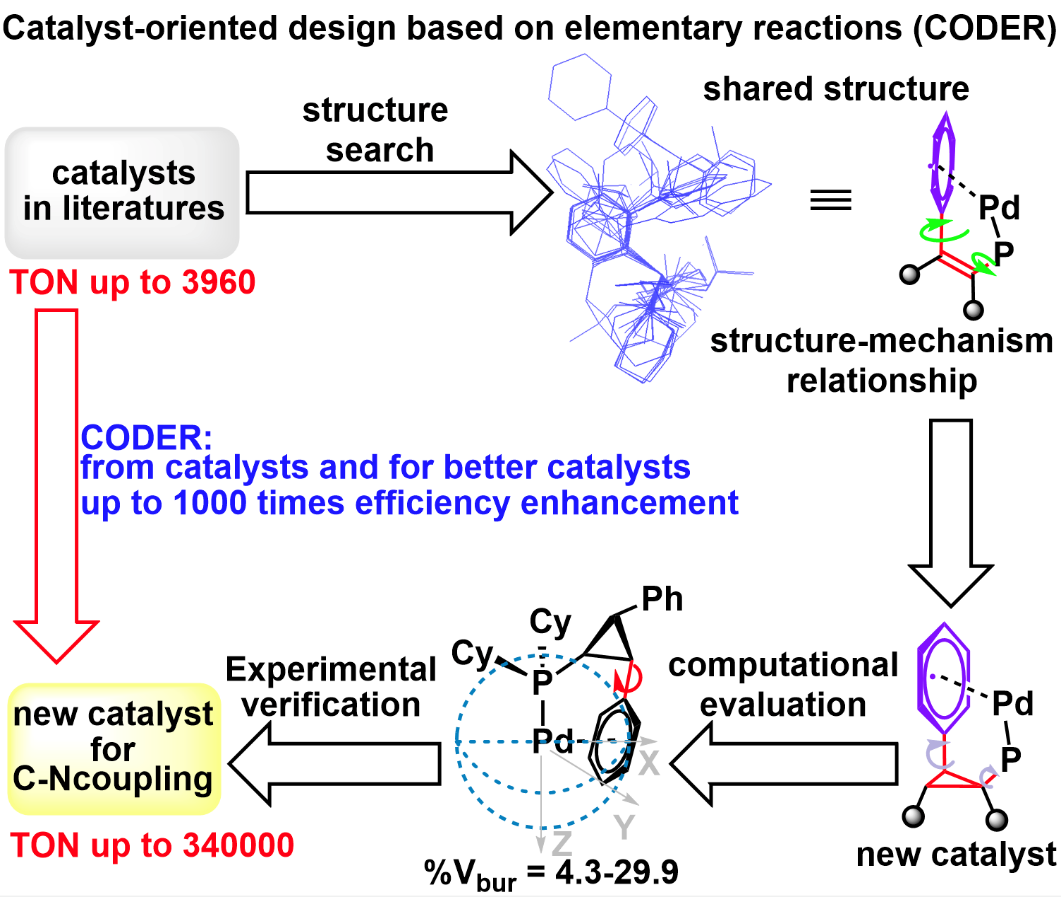
Catalysts are at the core of synthetic chemistry, and enhancing catalyst activity and selectivity are the keys to improving the efficiency and reducing the cost of synthesis. Traditionally, catalyst discovery has been based mainly on researcher experience and imagination and on serendipitous discoveries, and therefore trial-and-error costs are high, success rates are low, and results are difficult to replicate. In recent years, computational tools have shown potential utility for predicting catalytic performance and accelerating catalyst discovery. However, valuable mechanistic information has been almost ignored and using the computational tools to develop innovative catalyst structures still remain difficult. We can envision that for catalytic reactions with well-studied mechanisms, a catalyst design strategy based on human–computer interactions might be possible. First, computational tools could be used to identify and extract structural features shared by successful catalysts for a target reaction. Subsequently, with the help of experience and mechanistic data, researchers might be able to elucidate the mechanism by which the shared features facilitate the key elementary reactions and thereby propose a reasonable structure–activity relationship model. Using the proposed model, researchers could give full play to their creativity and propose new catalyst designs for the target reaction. The proposed catalysts could then be evaluated with the help of computational tools and then experimentally validated. The Buchwald–Hartwig reaction is one of the most efficient methods for constructing C–N bonds and has been widely used in the synthesis of nitrogen-containing molecules, including functional materials, pharmaceuticals, pesticides, and fine chemicals. The reaction is catalyzed by the precious metal Pd, and improving catalyst activity and selectivity can be expected to reduce the amount of Pd needed and decrease waste production, thereby increasing the practical utility of the reaction.
Recently, Shou-Fei Zhu’s group developed an extremely efficient Pd catalyst for C–N coupling of diarylamines guided by the CODER (catalyst-oriented design based on elementary reactions) strategy. Using the newly designed catalyst, they significantly improved the efficiency of the synthesis of various important triarylamine optoelectronic materials by enhancing the turnover numbers (up to 340000) to 1‒3 orders of magnitude towards literature values. Moreover, the Pd catalyst developed in this study could promote the C–N coupling at 100-gram scale with simple operation and thus could be expected to serve as an economical, green solution for the industrial production of triarylamine-based optoelectronic materials. Relevant achievements were published in Angew. Chem. Int. Ed. 2023, DOI: e202309111.